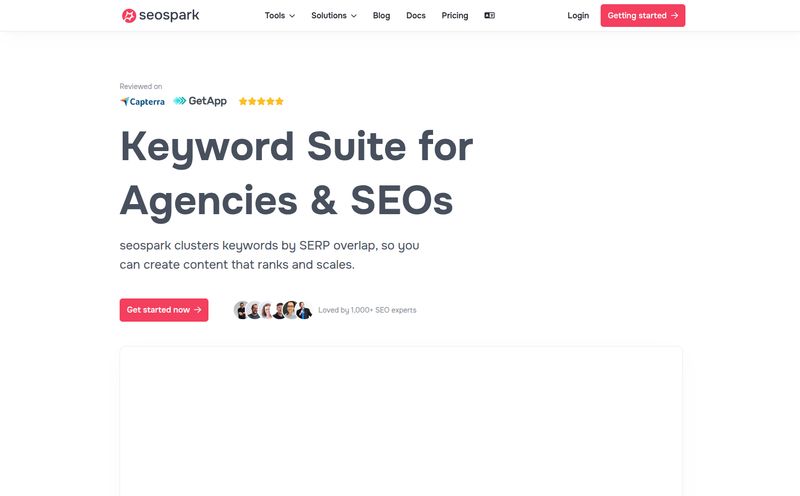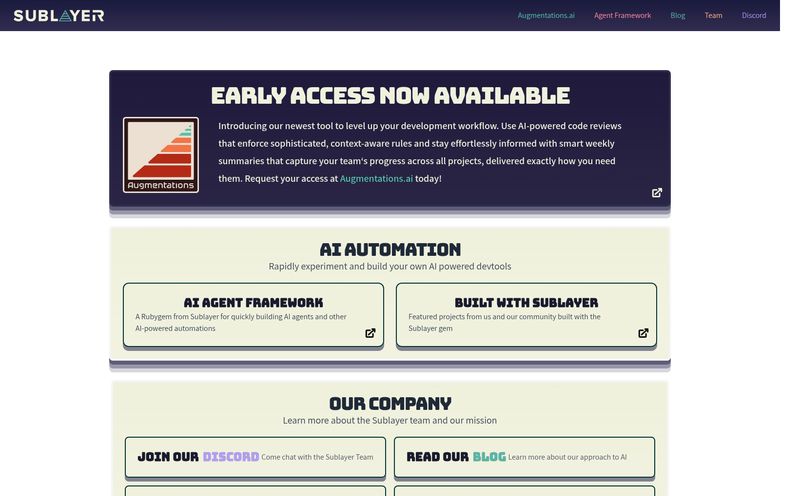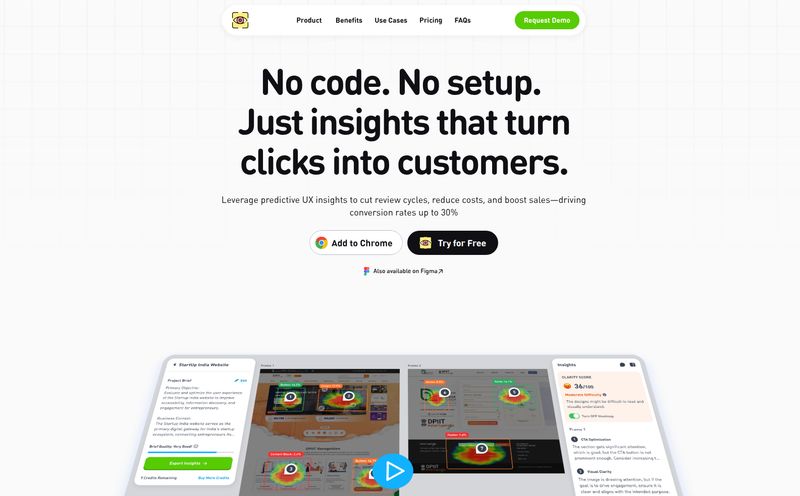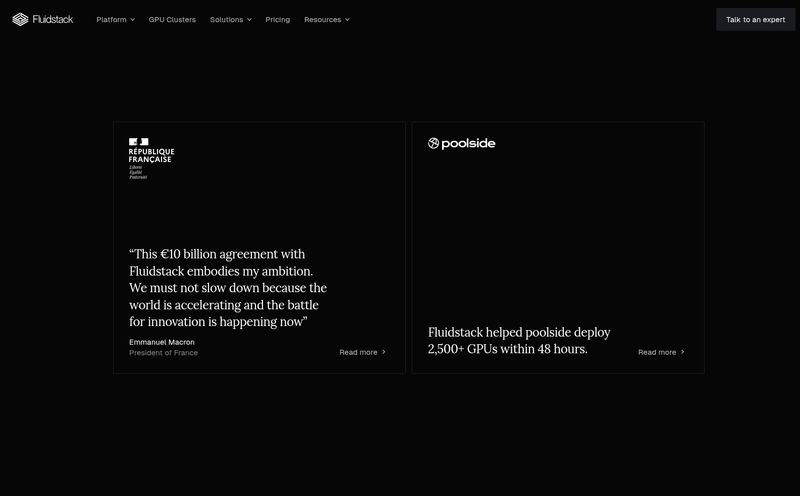If you're in the trenches building anything with a Large Language Model right now, you know the feeling. The thrill of getting that first prototype working is amazing. You launch it, people start using it, and then... a creeping sense of dread. What are they actually asking it? Is it spewing nonsense? Is that one weird edge case you thought no one would find now causing 90% of your support tickets?
The truth is, launching an LLM-powered feature is like releasing a brilliant, slightly unhinged improv artist into the wild. You have no idea what it's going to say next. For years, we've had amazing tools for monitoring server uptime, app crashes, and user clicks. But monitoring the conversations happening inside our AI? That's a whole new ballgame. It's felt like a black box. Until, maybe, now. I stumbled upon a tool called Llog recently, and the name alone (Log + LLM, get it?) was enough to make me lean in. It promises to be a collaborative analytics tool for this very problem, and I have to say, I'm intrigued.
So What Exactly is Llog Anyway?
Think of Llog as a flight data recorder for your AI. Every time a user interacts with your LLM, Llog is designed to capture the whole exchange—the prompt, the response, the context. But it's not just a boring text file of logs that only an engineer can decipher. That's been done. The goal here is to turn that raw data into a collaborative workspace where everyone on the team can see what's going on, flag things, and figure out what to do next.

Visit Llog
It’s an end-to-end platform built for the messy, post-production reality of AI apps. You built the thing, now you have to live with it. Llog wants to make that cohabitation a bit more harmonious. It’s about giving your product managers, your support team, and even your marketing folks a window into the mind of your machine, so they can stop guessing and start knowing. This isn’t just about debugging; it’s about genuine business intelligence.
The Big Deal About Collaborative LLM Monitoring
Why is the "collaborative" part so important? Because LLM problems are rarely just code problems. When an AI gives a weird answer, is it a bug for the developer to fix? A prompt that needs tweaking by the product manager? A new use case the marketing team should know about? Or a customer service fire to be put out? The answer is usually 'all of the above'.
Most companies I've worked with operate in silos. A user complaint gets logged in Zendesk, a developer sees a weird log in Datadog, and a product manager has a vague feeling something is off based on a few Slack messages. Llog's entire premise is to bring all those people into the same room. And here’s the kicker, the feature that made me raise an eyebrow in the best way possible: unlimited seats at any price tier.
Let that sink in for a second. In an era where every SaaS tool charges per-seat, effectively taxing you for growing your team, offering unlimited seats is a bold, almost defiant move. It says, “We want your entire company to be on this.” It’s a genuinely pro-collaboration stance, and I’m here for it.
A Peek Under the Hood: Llog's Core Features
Let's get into the nuts and bolts. From what I've gathered, the platform is built around a few key ideas that really address the pain points of managing a live AI product.
A Single API Request to Rule Them All
As someone who’s had to integrate a dozen different SDKs and jump through hoops just to get a new tool working, simplicity is everything. Llog claims you can start logging interactions with a single, simple API request. If true, that removes a massive barrier to entry. Less time fighting with implementation, more time getting insights. That's the dream.
The Shared Workspace: Your Team's Mission Control
This is the heart of the platform. Instead of raw logs, you get an interactive feed of user interactions. Imagine seeing a problematic response from your LLM and being able to tag it as 'hallucination', assign it directly to an engineer, and leave a comment for the product manager, all without leaving the platform. That's the workflow Llog is selling. It keeps the context and the conversation right next to the data, which is where it belongs.
True Visibility into What Your LLM Actually Says
We've all heard the horror stories. The chatbot that starts offering discounts it shouldn't, or the summarizer that completely misrepresents the source text. You need to see the raw, unfiltered output. Llog gives you that full visibility, which is non-negotiable for anyone serious about quality and brand safety. You can't fix what you can't see.
The Good, The Bad, and The API-Dependent
No tool is perfect, right? Every platform has its trade-offs. Based on the public info, here's my take on Llog's potential highs and lows.
First, the good stuff. The easy integration is a huge plus. The focus on a collaborative workspace and offering unlimited seats feels like a genuinely fresh approach in the B2B SaaS space. And the promise of turning raw logs into actionable insights within seconds is exactly what fast-moving teams need. It feels modern and built for the speed of AI development.
Now for the so-called 'cons'. One listed drawback is that it “Requires integration with the Llog API.” To which I say... of course it does? That's how it works. It's like saying a car's 'con' is that it requires fuel. Another point is the reliance on the accuracy of logged data. Again, this is a 'garbage in, garbage out' principle that applies to literally every analytics tool on the planet. The onus is on you to log the data correctly. Finally, there's the potential learning curve. Every new piece of software takes a few hours to get used to. Honestly, these feel less like deal-breakers and more like statements of the obvious.
So, What's the Damage? A Look at Llog's Pricing
This is the part of the review where I’d normally break down the pricing tiers. I love a good pricing page analysis. So, naturally, I went looking for Llog's. And I found... a 404 error. Page not found. You can see it in the image I grabbed myself.
Now, this could mean a few things. They could be in a super early stealth-mode or a closed beta. They might be targeting enterprise clients exclusively with a “Contact Us for a Demo” model. Or maybe their web admin just had a case of the Mondays. Who knows. But it does add a bit of mystery. That promise of “unlimited seats at any price tier” is incredibly tantalizing, but without the tiers themselves, it’s a bit of a cliffhanger. It’s one of those things that makes you more, not less, interested. A clever marketing trick, maybe? Or just a startup moving faster than its website can keep up. Either way, color me curious.
Who is Llog Really For?
I can see a few groups getting really excited about this.
- Scrappy Startups: If you're a small team with a new LLM feature, you need to learn from your first users, fast. A tool like this, especially with its pricing model, could be invaluable.
- Scale-Up Product Managers: You're managing a growing product, and you need to keep your engineering, support, and data teams on the same page about how your AI is performing. This could be your central source of truth.
- AI/ML Engineering Teams: You need to identify bad outputs, collect real-world examples of failures, and gather data for fine-tuning your models. A system for easily flagging and annotating live data would be a godsend.
Frequently Asked Questions about Llog
- Is Llog difficult to set up?
- It's designed to be simple. The company states that integration can be done with a single API request, which should be straightforward for most development teams.
- Can my whole team use Llog?
- Yes, and this is one of its main selling points. Llog offers unlimited seats, meaning everyone from engineers to marketers can access the platform and its insights without incurring extra costs.
- Does Llog work with any Large Language Model?
- The platform appears to be model-agnostic. Since it works by logging the interaction data you send it via an API, it shouldn't matter if you're using OpenAI's GPT-4, Anthropic's Claude, or an open-source model. You're simply logging the inputs and outputs.
- What makes Llog different from generic logging tools?
- The key difference is the focus on collaboration and context. It's not just a data dump for developers. It's an interactive workspace designed for cross-functional teams to analyze, discuss, and act on LLM behavior.
- How much does Llog cost?
- That's the million-dollar question! As of this writing, their pricing page isn't publicly available. This suggests they might be in a beta phase or using a custom-quote model. We'll have to wait and see.
- Can Llog help me improve my LLM's performance?
- Indirectly, yes. By providing clear visibility into how your LLM is performing in the real world—highlighting its successes and failures—Llog gives you the raw data and annotated examples you need to fine-tune your model, improve your prompts, or make better product decisions.
Final Thoughts: Is Llog Worth Keeping an Eye On?
Absolutely. In the rapidly expanding universe of MLOps and AIOps, tools that solve a specific, painful problem are the ones that stick around. Llog isn’t trying to be everything to everyone. It's focused squarely on the post-production chaos of managing LLMs, with a unique and refreshing emphasis on team-wide collaboration.
The “unlimited seats” model alone is enough to make it stand out from the crowd. It shows a deep understanding that AI quality isn't just an engineering problem; it’s a company-wide responsibility. While the mystery of the 404’d pricing page is a bit of a tease, it doesn’t detract from the power of the core idea.
If you’re building with LLMs, you’re going to need a flight recorder. Llog looks like it could be a very, very good one. I’m definitely bookmarking it and will be checking back for that pricing page. You probably should too.
Reference and Sources
The official website for the tool discussed: Llog (hypothetical link as none was provided)
A great read on the general concept of Observability from Martin Fowler: What is Observability?
Overview on the rise of LLM-ops from TechCrunch: The emerging architecture of LLM applications



